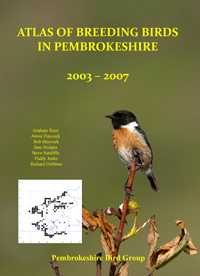Manx Shearwater - 2003-07
 Monday, May 7, 2012 at 4:21PM
Monday, May 7, 2012 at 4:21PM The Manx Shearwater colonies of the Pembrokeshire islands total around 50% of the world population, with around 120,000 pairs on Skomer, 45,000 pairs on Skokholm and 4,000 pairs on Ramsey. Because of the importance of this Shearwater (in European and indeed World terms) these island have been designated a Special Protection Area for them (under the EC Directive on the conservation of wild birds (79/409/EEC)
They are very difficult to census accurately and methods have changed over the years, from simple estimates based on counts of birds seen at night, estimates of burrow densities through capture/recapture methods derived from known numbers of ringed birds, through to the present day estimates based on counts of burrows and the responses of adult birds to tape recordings of their calls. Each method has been refined and compared but throughout there has been strong evidence of a continuing slow increase in the populations in the last fifty years, perhaps with an indication of a reverse of this in the early 2000’s.
On Ramsey Island the small population (perhaps 1,500 – 2,000 pairs) has risen rapidly since the Brown Rats were removed in 2000. In 2008 the population was estimated as 4,000 pairs.
Steve Sutcliffe.

Fieldwork 2003-07
Red = breeding confirmed = 3
Total tetrads in which registered = 3
 PBBA 2003-7,
PBBA 2003-7,  SJS in
SJS in  Manx Shearwater
Manx Shearwater 









